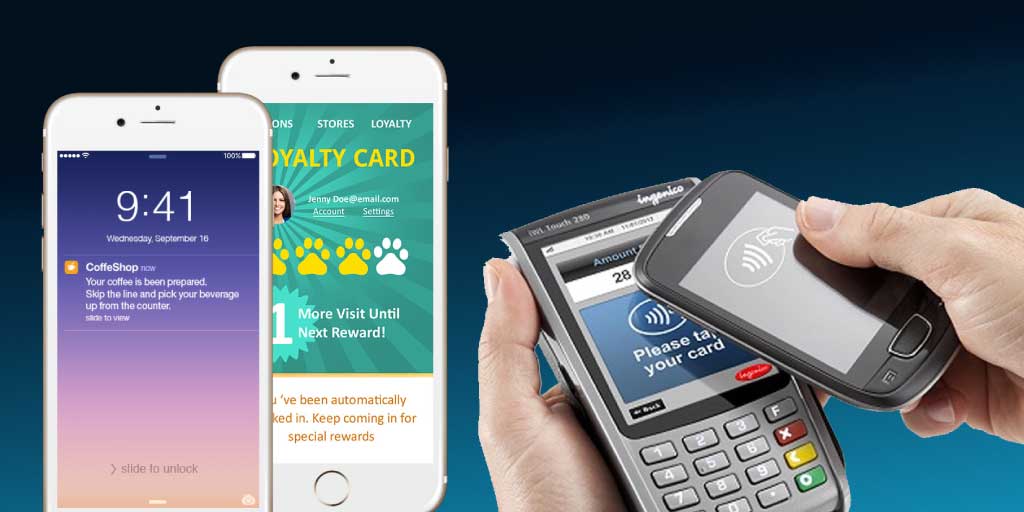Near Field Communication (NFC) and Bluetooth Low Energy (BLE); both are two of the leading technologies powering modern services in our smartphones, yet they are designed with very different user experiences in mind. If you are in the process of recreating your mobile app experience, consider how the technologies differ from one another and which will ultimately allow you to create the mobile experience you are striving for.
Active vs Passive Use Cases

Active Use Case through NFC
One of the key differentiators with the technologies is that NFC requires a user (e.g., your shopper) to pull out their phone and “tap” it onto a NFC reader. In Gimbal-lingo, we refer to this as an “active” use case since it requires the end user to actively be using their smartphone before any activity can occur. One place you probably see this in use today is through mobile payment systems like ApplePay or SamsungPay.
Conversely, Bluetooth (in the form of our beacons) has the capability to be used in either “active” or “passive” modes. A “passive” mode refers to when a user has a locked device that is not in use, perhaps in a pocket or purse, and a notification or experience occurs. In addition to enabling your smartphone to pair with your wireless speakers, car and more, Bluetooth is also increasingly used to alert your smartphone to nearby happenings or offers in your proximity (whenever your smartphone comes into range with the Bluetooth signal). Our beacon solution has been meticulously engineered to allow you to engage with users whether they are “tapping” on a receiver (like with NFC), or up to 50 meters away. We do this by allowing you to change the signal strength of your beacons so you can create the user experience you have in mind.

Left: BLE in active (foreground) mode. Right: BLE in passive (background) mode
Let’s do a quick exercise to see which use cases you are more interested in, and as a result, what technology is a better fit. Imagine temporarily that you are an executive for a leading grocery store chain, tasked with updating your mobile app to keep up with changing consumer habits. You initially identify a handful of use cases that you want to integrate. In particular, you want to:
- Increase exposure: Highlight specials to nearby shoppers
- Surprise & Delight: Send users who spend a certain amount of time in an aisle a recipe with the other needed ingredients for the dish
- Improve Loyalty: Remind shoppers at checkout to use their loyalty card to continue accruing reward points
- Harness Data: Gain in-store analytics such as time spent in each aisle and part of the store
- Easier Payments: Allow mobile payments at the register
Can you guess which of these would be enabled through Bluetooth vs. NFC? In actuality, all but the mobile payments piece would likely require a Bluetooth beacon.
Summary
While NFC and BLE are both valuable technologies that will increasingly be leveraged to create more mobile-friendly experiences, we believe Bluetooth beacons offer unprecedented flexibility and opportunity for mobile-oriented organizations. Still have questions on how you can meet your proximity (and macro-location) needs? Contact us and get connected to industry experts.

